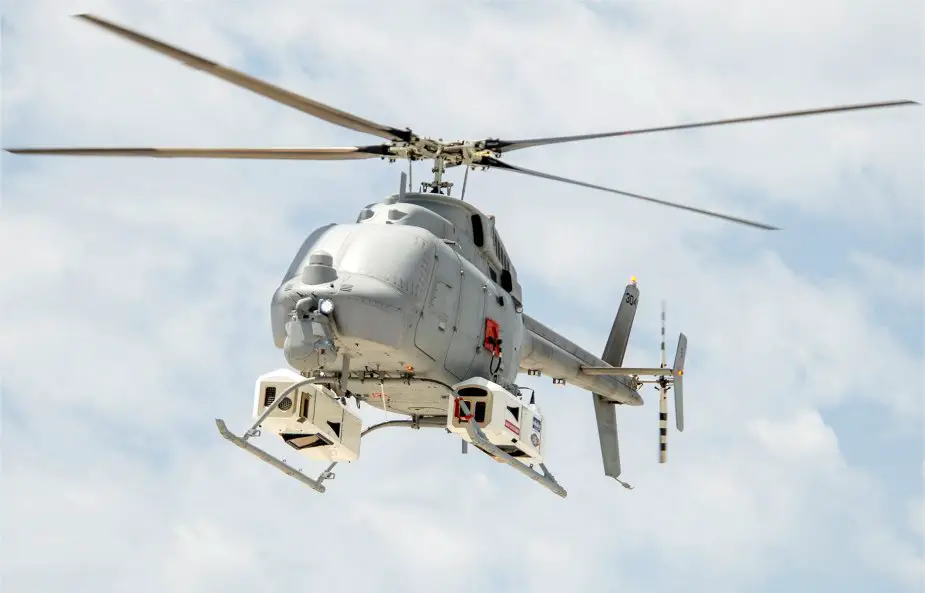Breaking news
US Navy successfully tests MQ-8C Helicopter with Mine Countermeasure.
According to information published by the U.S. DoD on Jul 8, 2022, the Navy recently demonstrated a mine countermeasure (MCM) prototype technology aboard the MQ-8C Fire Scout UAS at Eglin Air Force Base, Florida, proving a capability that could allow the warfighter to rapidly detect and respond to threats.
Follow Navy Recognition on Google News at this link
 MQ-8C Fire Scout UAS with Mine countermeasure prototype technology (Picture source: US Navy)
MQ-8C Fire Scout UAS with Mine countermeasure prototype technology (Picture source: US Navy)
The objective of the demonstration was to gather performance data for both the MQ-8C Fire Scout and Single-system Multi-mission Airborne Mine Detection (SMAMD) System to inform future MCM integration efforts.
The team conducted operations from the Naval Surface Warfare Center (NSWC) utilizing drifting, tethered, and moored mines throughout the beach zone to deep waters. They gathered data day and night, across all water depths and in mild to difficult weather conditions.
The demonstration also proved the reliable and repeatable high performance of the MQ-8C Fire Scout. The air vehicle handled the dual-podded system with ease, being the first MCM capability flown on the MQ-8C as well as the heaviest payload carried to date. Fire Scout successfully operated in restricted and unrestricted air space alongside other aircraft platforms.
The SMAMD System, developed by BAE Systems under a Future Naval Capability (FNC) Program sponsored by the Office of Naval Research (ONR), is an airborne optical sensor suite that, in a single pass, detects and localizes mines and obstacles on land and at sea.
With a low false-alarm rate, SMAMD provides real-time detection sent via data link enabling warfighters to respond much quicker to threats than the current MCM technologies allow as post-mission analysis is required.
About the MQ-8C UAS
The Northrop Grumman MQ-8C Fire Scout (known as the Fire-X during development) is an unmanned helicopter developed by Northrop Grumman for use by the United States Navy.
The MQ-8C also has autonomous take-off and landing capability. It is designed to provide reconnaissance, situational awareness, aerial fire support and precision targeting support for ground, air and sea forces.
The MQ-8C airframe is based on the Bell 407, while the avionics and other systems are developed from those used on the MQ-8B Fire Scout. It first flew in October 2013 and achieved initial operational capability on 28 June 2019.




























